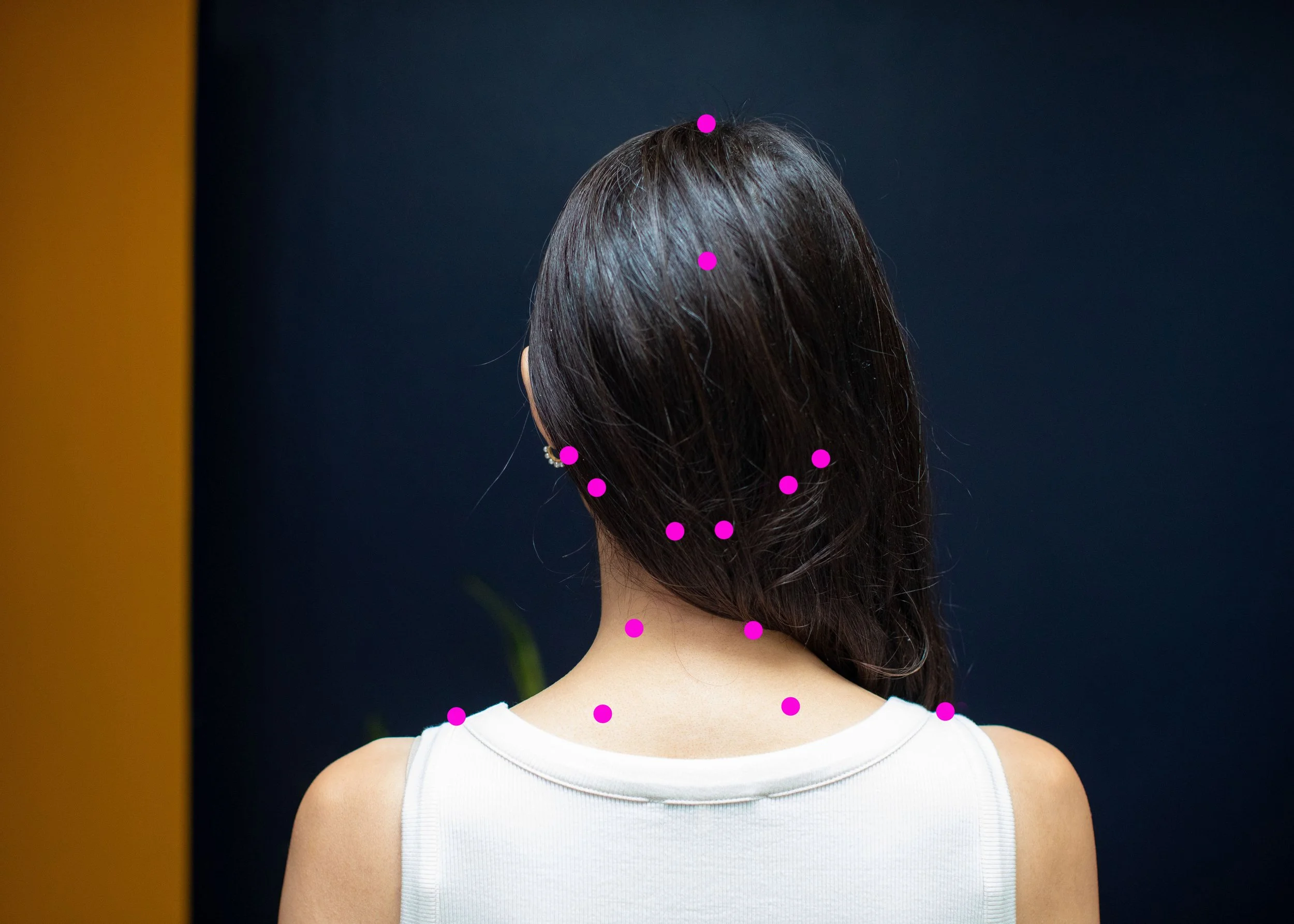YOUR BASIC GUIDE TO MARMA POINTS
If you’ve been following the blog these past few weeks, and the launch of the brand new East by West Kansa Wand and Neem Comb, you will have picked up on the intriguing Ayurvedic concept of Marma points and Marma therapy for health and wellbeing. Marma translates as “secret” and Marma points were once called “Bindu” — which is a dot or mystic point that unlocks the body’s potential for healing. Marma points are vitality AKA vital energy points or Pranic centers — specific points on the head and body through which Prana (life-force energy) flows. These Marma points are located at the junction where two or more types of tissues (such as muscles, veins, ligaments, bones or joints) meet and the Nadis (the subtle energy centres of the body) begin and end, and it is here that the Prana exits the Nadis and enters the physical body. The major Marma points in our body correspond to various Chakras (energy fields) situated along the spine, from the base of your spine to the crown of your head, while the minor Marma points are found around the torso and the limbs.
There are 108 Marma points in total (which can be as large as 6 inches in diameter), one of which is located in the mind, with 37 of them on the head, face and neck (see pictures). When we are out of balance for any environmental or internal reason, the energy in the body doesn’t flow well and can become “stuck” at these points, leading to further imbalance and dis-ease. Marma chikitsā or Marma therapy is the art of touching these points precisely so that any energy blockages present (which might prove tender to touch) can be released. Balance can be restored by gently massaging these energy points to stimulate the Chakras and the Doshas as well as the various organs and systems of the body. This helps to remove metabolic waste, stress and negative emotions for increased overall wellness. If you’re thinking this sounds a lot like acupressure, you’re absolutely right! There is plenty of overlap between Ayurveda and Traditional Chinese Medicine (more on that here) — two of many ancient systems of health which read the body according to nature and study it as an energetic system. Traditional Chinese Medicine’s manipulation of these points has given rise to popular therapies in the West such as reflexology, acupuncture and acupressure with great success. That said, the knowledge of Marma points is thought to predate acupressure and acupuncture.
In Marma therapy or massage, the focus is to manipulate Prana, but it’s also very effective for stimulating the lymphatic system, relieving stiff muscles and boosting circulation. The physical manipulation of these points is much more subtle — no needles here please! Any blocked energy is then able to circulate through the body helping with a number of health concerns, such as pain, low energy, sleep issues, poor digestion, and much more. If this is all sounding too much — don’t worry! Just think of them as important energy points of the body that can be gently stimulated for overall wellbeing.
Marma therapy can be applied by an Ayurvedic doctor or therapist — check out the Resources page for my favourites, or you can easily find a practitioner close to you through the APA or on Treatwell. And you can do it yourself too. Not to be underestimated is self-energy work — getting to know and understand our mind-body through Marma therapy, massage, meditation, reiki, etc. is one of the greatest things we can do for ourselves, and this kind of self-care practice creates positive change that has a ripple effect affecting those around you and the greater world. If you have the East by West Kansa Wand, don’t forget to use the QR code on the instructions insert to find out how you can use the Kansa wand for your own Marma therapy.



